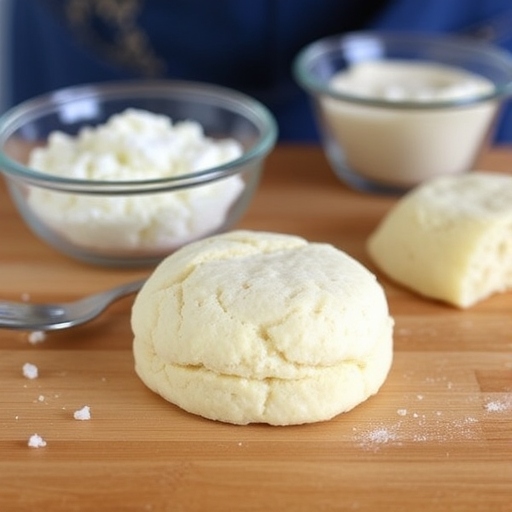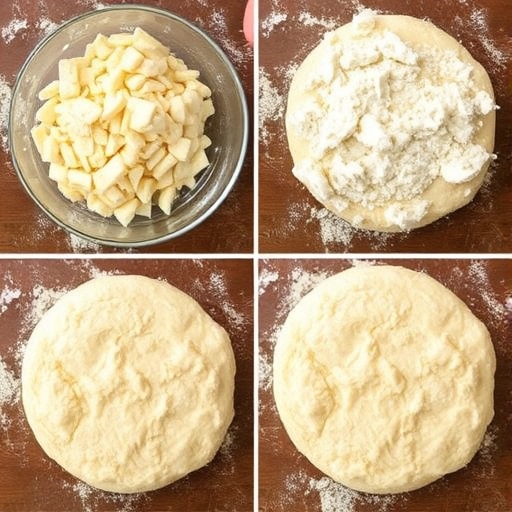Introduction
Brining is a transformative technique that elevates the flavor, texture, and juiciness of chicken. Whether you’re preparing a roast, grilling, or frying, a good chicken brine ensures your dish turns out perfectly every time. This recipe breaks down the process of creating a flavorful brine that infuses your chicken with deliciousness, ensuring every bite is tender and mouthwatering.
Table of Contents
1. The Story Behind Chicken Brine
The practice of brining meat dates back centuries, originally developed as a preservation method. Over time, chefs and home cooks discovered that soaking chicken in a saltwater solution not only preserved it but also enhanced its flavor and moisture. Today, brining is an essential step for creating juicy chicken with a depth of flavor that can’t be achieved through seasoning alone.
2. The Benefits of Making Your Own Chicken Brine
- Enhanced Flavor: A homemade brine allows you to tailor the taste with herbs, spices, and aromatics.
- Superior Moisture Retention: Brining breaks down muscle proteins, helping the chicken retain moisture during cooking.
- Tender Texture: The process tenderizes even the toughest cuts.
- Customizable: From classic salt brines to flavorful herb-infused versions, you control the flavor profile.
3. Essential Ingredients for the Perfect Chicken Brine
A basic brine starts with a simple saltwater solution. From there, you can enhance it with additional ingredients for a robust flavor.
- Water: The base of any brine; acts as the medium to dissolve salt and distribute flavors.
- Salt: Creates the necessary chemical environment to tenderize and flavor the chicken.
- Sugar (optional): Balances the saltiness and adds subtle sweetness.
- Aromatics: Garlic, onions, bay leaves, and fresh herbs like thyme, rosemary, and parsley.
- Spices: Black peppercorns, coriander seeds, and mustard seeds.
- Acid (optional): Lemon juice, apple cider vinegar, or orange slices for a tangy kick.
4. Cultural History of Brining
Brining is rooted in ancient culinary traditions, with methods evolving based on regional preferences. Scandinavian countries used salt-heavy brines for preserving fish, while American Southern cuisine popularized brining poultry, especially for Thanksgiving turkeys. This universal technique has been adapted globally to enhance various meats.
5. Equipment You’ll Need
- Large stockpot or mixing bowl
- Measuring cups and spoons
- Whisk
- Airtight container or resealable plastic bag (to hold chicken and brine)
- Refrigerator space for chilling
6. Step-by-Step Instructions for Chicken Brine
Ingredients:
- 1 gallon of water
- 3/4 cup kosher salt (or 1/2 cup table salt)
- 1/2 cup granulated sugar
- 4 garlic cloves, smashed
- 1 onion, quartered
- 2 bay leaves
- 1 tablespoon black peppercorns
- Fresh herbs (thyme, rosemary, parsley)
Instructions:
- Prepare the Brine Solution:
In a large pot, combine the water, salt, and sugar. Heat over medium heat, stirring until the salt and sugar completely dissolve. - Add Aromatics:
Remove the pot from heat and stir in garlic, onion, bay leaves, peppercorns, and fresh herbs. Allow the mixture to steep for 10 minutes. - Cool the Brine:
Let the brine cool completely to room temperature, then chill it in the refrigerator. Adding chicken to a hot brine can start the cooking process prematurely, so ensure it’s cold. - Brine the Chicken:
Submerge the chicken in the cooled brine, ensuring it’s fully covered. Use a resealable plastic bag for small cuts or a large container for whole chickens. - Refrigerate:
Cover and refrigerate for:- Small cuts (breasts, thighs): 2-4 hours
- Whole chicken: 8-12 hours
- Rinse and Pat Dry:
Remove the chicken from the brine and rinse under cold water to remove excess salt. Pat dry with paper towels. - Cook as Desired:
Roast, grill, or fry your brined chicken, ensuring it’s cooked to an internal temperature of 165°F (74°C).


7. Suggestions for Serving and Storing
- Serving: Brined chicken pairs beautifully with roasted vegetables, creamy mashed potatoes, or a crisp green salad.
- Storing: If you’re not cooking immediately, refrigerate the brined chicken for up to 24 hours.
8. Chef Simon’s Tips for Chicken Brine
- Balance Your Ratios: Stick to the 1-gallon water to 3/4-cup kosher salt ratio for optimal results.
- Experiment with Flavors: Infuse your brine with unique ingredients like honey, smoked paprika, or fresh ginger.
- Don’t Overbrine: Leaving the chicken in the brine too long can make it overly salty or mushy.
9. Emotional and Psychological Impact of Food
There’s something inherently satisfying about preparing a brine—it’s a deliberate process that slows you down, grounding you in the act of cooking. Sharing a juicy, flavorful chicken dish with loved ones fosters warmth and connection.
10. Mindful Cooking Techniques
- Focus on Texture: Notice the salt granules dissolving and the aromas as you add fresh herbs.
- Be Present: Use the brining process as a way to center yourself and embrace the joy of cooking.
11. Tips for Keeping the Recipe Fresh Longer
- Store unused brine in the refrigerator for up to 3 days, but discard after one use with chicken.
- If you’re preparing ahead, freeze the brine in ice cube trays for future use.
12. Advanced Culinary Terms and Techniques
- Osmosis: The scientific process where salt and water penetrate the chicken, enhancing its flavor and moisture.
- Brining vs. Marinating: Brining focuses on moisture and tenderness, while marinades emphasize surface flavor.
13. Healthy Ingredient Alternatives
- Replace sugar with honey or maple syrup for a natural sweetener.
- Use low-sodium salt for a heart-healthy option.
14. More Serving Ideas
- Serve brined chicken shredded in tacos or burritos.
- Use in chicken salads or as a topping for pasta.
15. Common Issues and Solutions
- Too Salty Chicken: Rinse thoroughly after brining. Adjust salt in recipes if needed.
- Rubbery Texture: Reduce brining time for smaller cuts of chicken.
16. Variations to Try
- Citrus Brine: Add orange and lemon slices for a zesty twist.
- Spicy Brine: Incorporate crushed red pepper flakes and smoked paprika.
17. Nutritional Information and Health Benefits
- Low-Calorie Flavor Boost: Brining adds flavor without extra calories.
- Rich in Minerals: Salt and herbs introduce essential trace minerals.
18. The Art of Pairing Brined Chicken
- Pair with rich sides like macaroni and cheese, or balance it with a light vinaigrette salad.
- Serve with a chilled glass of white wine or a crisp lager.
19. Weather and Recipe Outcome
Cold weather calls for roasted brined chicken, while brined grilled chicken is perfect for summer barbecues. Adjust seasoning based on seasonal herbs.
20. Other Chicken Recipes to Explore
- Lemon Herb Roasted Chicken
- Classic Fried Chicken
- Grilled Chicken Skewers
21. Focus on Tools and Equipment
- Digital Thermometer: Ensures chicken is cooked to perfection.
- Large Container: For easy brining without spills.
22. Frequently Asked Questions
Q1: Can I reuse chicken brine?
A1: No, discard brine after one use to avoid cross-contamination.
Q2: Can I use frozen chicken in a brine?
A2: Yes, but ensure the chicken is fully thawed before brining for even absorption.
Conclusion
A well-prepared chicken brine is the secret to elevating your poultry dishes. This versatile technique promises succulent, flavorful chicken that’s perfect for any occasion. With the right ingredients and a little patience, your meals will shine with restaurant-quality flavor. Happy cooking!
Thank you for visiting SqueezyRecipes! We’re dedicated to making cooking enjoyable and accessible for everyone, regardless of your skill level. Chef Simon is always ready to share the best recipes that bring a creative touch to your daily meals. With each visit, you’ll discover new recipes and innovative ideas that cater to every occasion. Don’t miss out on exploring SqueezyRecipes for the latest delicious dishes, and feel free to leave your feedback and share your experiences with the recipes you’ve tried. Cooking together makes everything better!




